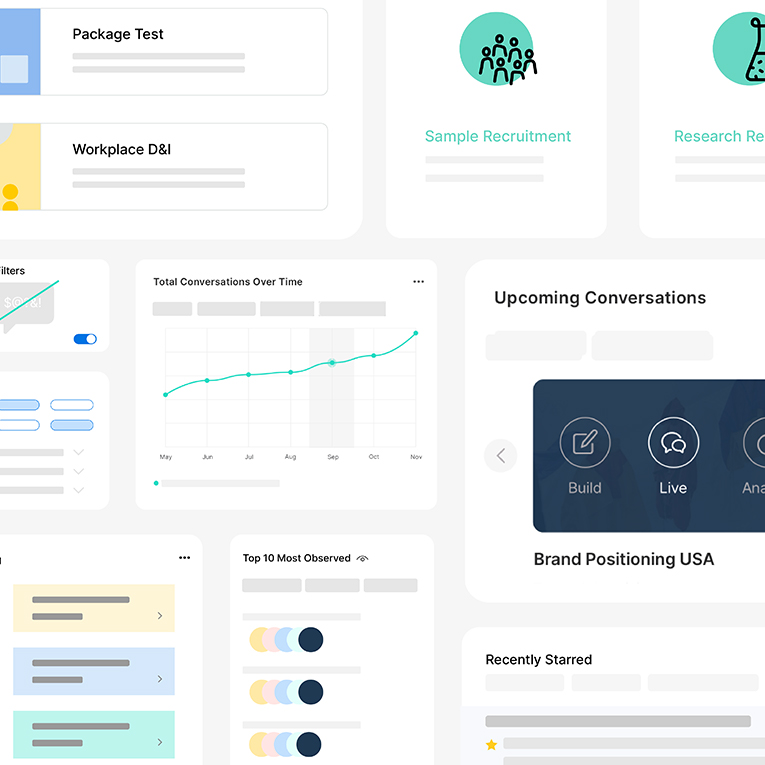.webp)
Trends
How to Calculate Your Sample Size Using a Sample Size Formula

.png)

.png)
Read More

.png)
.png)
.png)
Maria Noesi
November 25, 2021
.webp)
.webp)
.webp)
.webp)
.webp)
5 Best Practices for Conducting Breakthrough Employee Research with Remesh
5 best practices to help you conduct employee research for maximum efficiency and impact.

In a world hungry for data-based insights, the demand for rigorous employee research is on the rise. But conducting high-quality studies in today’s business environment is no easy task. Gathering feedback from remote workforces and geographically dispersed participants can be difficult. Producing rapid insights in a fast-moving world can seem impossible, especially when sifting through volumes of open-ended comments and qualitative feedback. And ensuring that data provides findings that are both deep and broad, empirically sound and practically useful, can challenge even the most experienced researchers. While these challenges are real, they're not insurmountable. Based on our observations and discussions with top experts in our research community, we’ve uncovered best practices in using the Remesh platform to conduct industry-leading research with maximum efficiency.
Let’s take a look at five best practices to keep in mind when designing your next research project.
- Start Live, then Flex. Good research starts with a representative research sample. In modern organizations, gathering employees together for collaborative dialogues, collective inquiries, and data-gathering conversations has become increasingly difficult. But by using our Live and Flex features together, you can conduct wide scale research projects that allow for maximum participation.
We recommend starting with Live, which allows researchers to host a synchronous conversation with up to 1,000 participants at a time. You can then convert the session to a Flex conversation and continue gathering data from participants who could not join the Live event. Clients combining Live and Flex have the ability to gather data from robust samples in efficient ways. - Mix methods. Most research platforms are methodologically limited, designed primarily to conduct either quantitative or qualitative research. Remesh is different. It empowers researchers to conduct powerful mixed-method studies efficiently and effectively.
- Using our closed-ended items, you can measure employee attitudes, assess their preferences and needs, and evaluate the quality of their experiences at work.
- Using our open-ended items, you can explore emerging concerns and trends, discover new ideas and solutions, and engage in rich community dialogues that are important to people across the organization.
- Leverage our library of discussion guides. Coming up with good research questions can be difficult, particularly when time is tight. To help our clients kickstart their research design process, we are building out a library of diagnostic questions and Discussion Guides on a wide range of topics, including workplace culture, leader effectiveness, team effectiveness, and employee engagement. All Discussion Guides are carefully crafted based on a blend of theory, research, and field experience, and they include both closed and open-ended items to allow for broad and deep explorations of critical issues.
- Use AI to streamline analysis. At Remesh, we are always looking for ways to harness advances in NLP, machine learning, large language models, and artificial intelligence. Summarize, our latest platform feature, uses Generative AI to synthesize data and surface key findings quickly—in a matter of minutes (or even seconds), not days. Summarize doesn’t replace the need for in-depth analysis. But it can save researchers hours of work sifting through qualitative data.
- Tap into the collective intelligence of participants. When it comes to employee research, external perspectives from objective, third-party experts are helpful. But insights from leaders, managers, and employees inside the organization are critical. Based on their day-to-day experiences, organizational members have personal insights and pragmatic solutions that are only available to people inside the system. The Remesh platform allows researchers to tap into the workforce’s collective intelligence by asking conversation participants to review and evaluate their peers’ feedback and ideas. Through this process, researchers can identify open-ended comments and recommendations that are highly endorsed and widely supported by organizational members.
In today’s complex environment, high-quality employee research can be a game-changer. Good studies have the power to improve performance, increase engagement, ingnite innovation, and slash turnover rates. By employing these five strategies, you can ensure that your next research project is well-designed and well-executed to propel your organization forward.
Ready to see Remesh in action? Reach out to our team and will connect you with a dedicated product expert.
More

Remesh Evolution: AI-Powered Insights Platform Unveils Major Updates to Satisfy Market Demand for High-Quality, Human-Centric Research

.png)

.png)
Read More

.png)
.png)
.png)

.png)

.png)
Learn More

.png)
.png)
.png)


Stay up-to date.
Stay ahead of the curve. Get it all. Or get what suits you. Our 101 material is great if you’re used to working with an agency. Are you a seasoned pro? Sign up to receive just our advanced materials.



